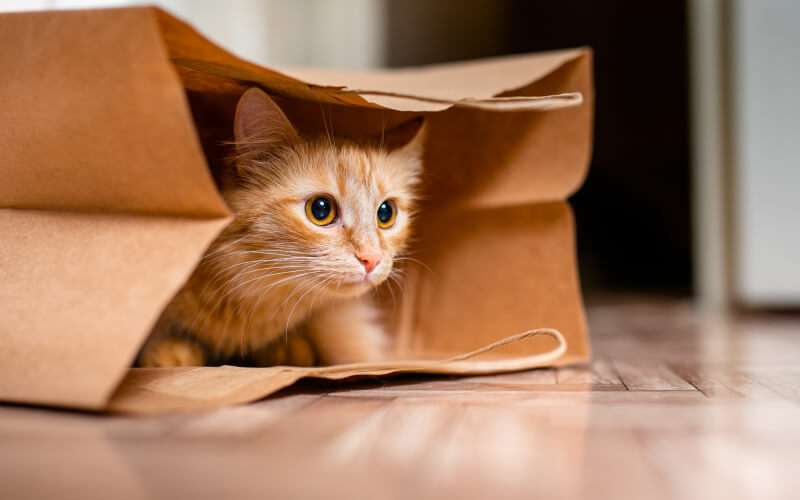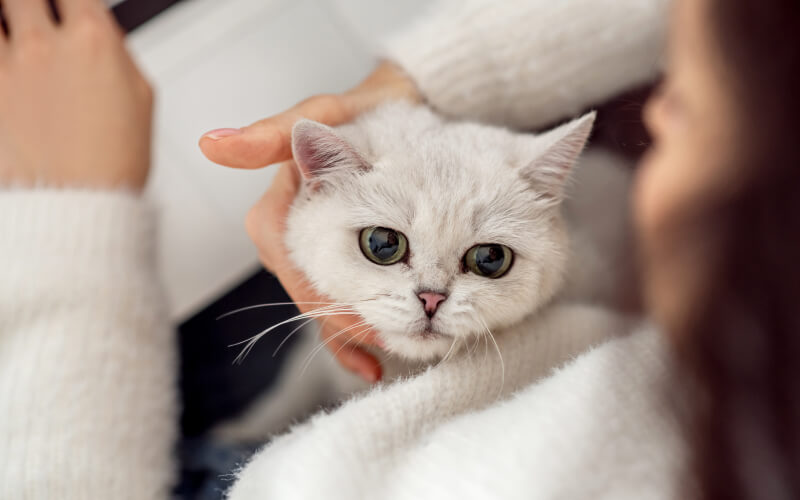Cats are finicky and complicated creatures. Their sassy quirks are one of the many reasons we adore them. It’s easy to tell when our cats are happy, but the signs can be subtle sometimes. If you don’t know what to look for, you might miss them.
As a concerned cat parent, you may have wondered if your cat is fine. And, because each cat is unique, they may express happiness in a variety of ways.
They rub up against you one minute and then hide in the closet the next. They enjoy cuddling, but only on their own terms. When you’re rushing out the door, they seem to want the most attention. That is, however, what makes them so great.
Today we are going to tell you about the Signs that Show your Cat is Happy. So, keep reading the article to understand your cat in a better way.
9 Signs that Show your Cat is Happy
1. Giving Headbutts
You probably wouldn’t consider a human ramming their head into your side as a sign of affection. Headbutting is, however, a sign of love for cats.
Butting is a cat’s way of expressing affection for others through communication. She’s recognizing you as one of her friends by rubbing this body part against one of yours.
A cat’s territory may also be marked by head bunting. The chins, cheeks, forehead, and lips of cats have scent glands. Your cat is spreading a distinct scent on you and identifying you as a friend when it rubs its face against you.
2. Resting
Cats enjoy sleeping and resting, but how, where, and for how long they do so is all-important. Resting with the paws folded under the chest, for example, indicates that the cat is at ease and has no pressing need to flee.
A cat with hunched shoulders and front paws flat on the ground, ready to run, is the opposite. You can probably score your cat highly for relaxation and happiness if it is sleeping on its back on a sunny lawn or on the carpet indoors, with all four legs spread-eagled and belly exposed.
One of the greatest rewards for us owners is sleeping curled up on our laps and purring, as we believe the cat is quite content in this situation. If the cat returns for more, we can assume that it is a rewarding behavior.
3. Kneading
Kneading is such a common cat behavior pattern that it has its own collection of cute names. You might refer to it as making biscuits, mashing potatoes, or playing the piano at home. Some people refer to it as “free acupuncture.” There’s no mistaking the bliss of a kneading cat, whatever you call it.
The kneading motion is associated with the comfort of nursing, and cats do it when they are content and safe. It’s frequently accompanied by other happy behaviors such as purring or half-closed eyes.
4. Tail Signals
The tail of a cat can reveal a lot about its mood. Tails are a great resource for cats trying to communicate their mood to humans and other animals because they can move in so many ways. Of course, we can only do this if we know what to look for.
Though a bushy tail, upright hair, and arched back indicate that a cat is threatened, an erect and swishy tail can indicate that it is confident and happy to be in your company.
5. They Blink at you
Blinking may appear to us to be the most common and mundane motion, but it is a sign that cats trust you. That’s because when they blink, their guard is down, indicating contentment and happiness.
Direct eye contact is regarded as a threat or a challenge. If a cat gives another cat or person a friendly look, they want the other party to know it’s not a hostile stare or glare. As a result, the cat’s blink indicates that it wants to be friendly. You’ll communicate the same way if you return the slow-blink favor.
6. Showing its Tummy
A fluffy cat belly is one of the cutest things you’ll ever see, and seeing one means you’ve earned that cat’s trust.
Cats usually show their bellies to creatures they trust voluntarily. It demonstrates that they are at ease with being vulnerable. You can bet your cat is feeling affectionate if it stretches out on the floor beside you and rolls around.
When cats are cornered, they may also expose their tummies as a submissive or defensive act. Try not to stroke the cat’s belly if you don’t know them well, as this may cause the cat to swipe at you.
7. Grooming Well
Cats are particular about their grooming, and a well-kept coat indicates that all is well in your kitty’s world. Maintaining a healthy, pristine coat is an activity performed by a cat who is happy, healthy, and has a general sense of well-being.
Make an appointment with your veterinarian if your cat isn’t grooming herself and appears untidy.
8. Vocal Clues
Cats can literally “say” how happy they are. Kitties with vocals tell you everything and have long conversations with you. Higher-pitched sounds are generally “happy,” whereas lower-pitched sounds can be frustrating and demanding. Quiet cats may use silence to express happiness and vocalize more to express dissatisfaction.
Yes, it’s perplexing! That is, however, why people adore their mysterious felines! While purrs aren’t always happy, they are, for the most part, a sign of feline contentment, if not bliss. Purring, the sound of kitty chortles and trills is a good indicator of cat happiness.
9. Eating Well
Consistent grooming is a sign of good health and happiness, and having an appetite is also a sign that your cat is doing well. It’s good news for everyone if they’re eager to eat at every meal. Cats that aren’t eating, on the other hand, could be sick or stressed.
Conclusion
These were the most common behaviors and body language signals that your friends and family members display to show that they are happy and, more importantly, healthy. Look for these signals in your cat and if something is wrong, call your nearest vet.






